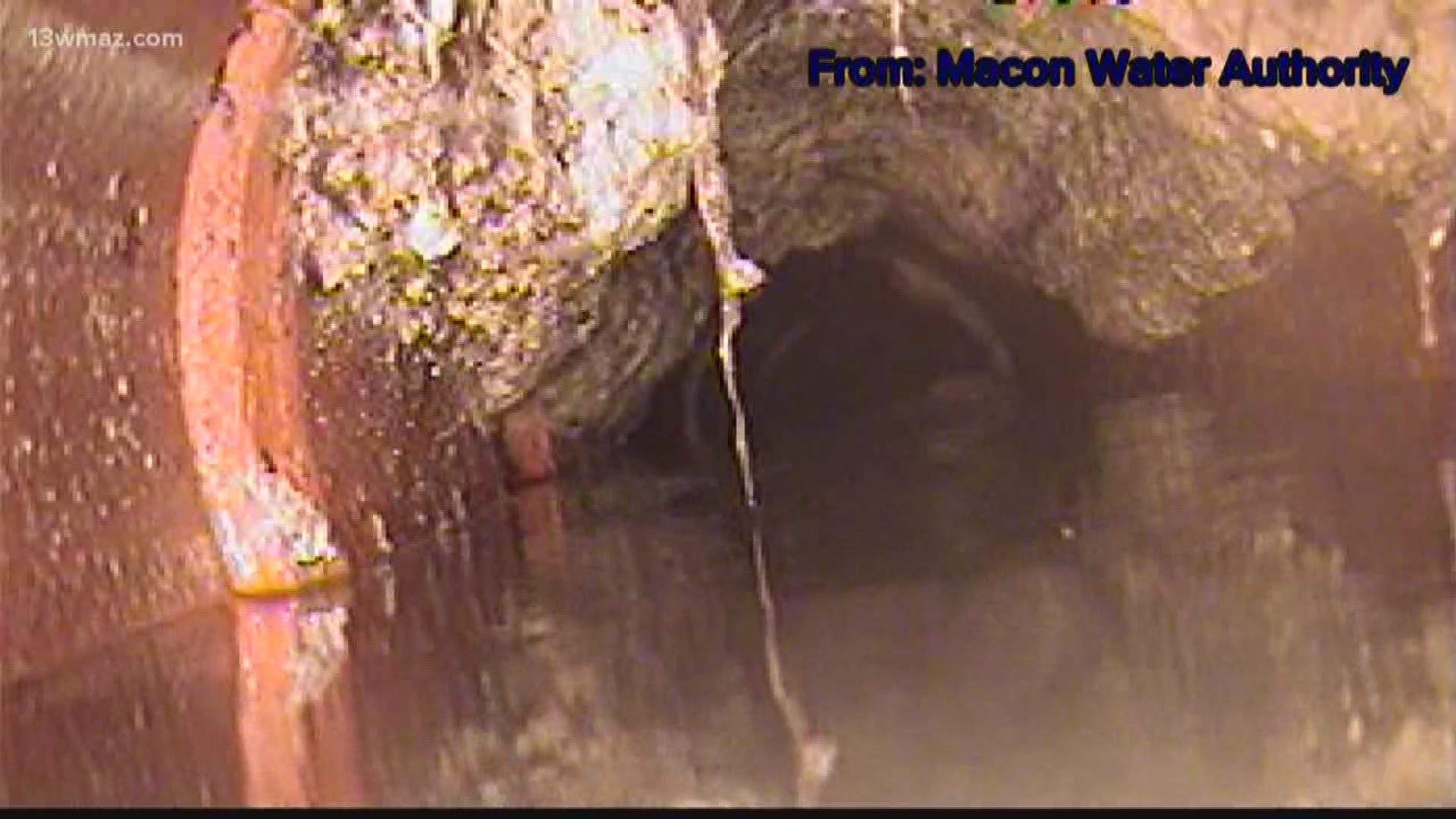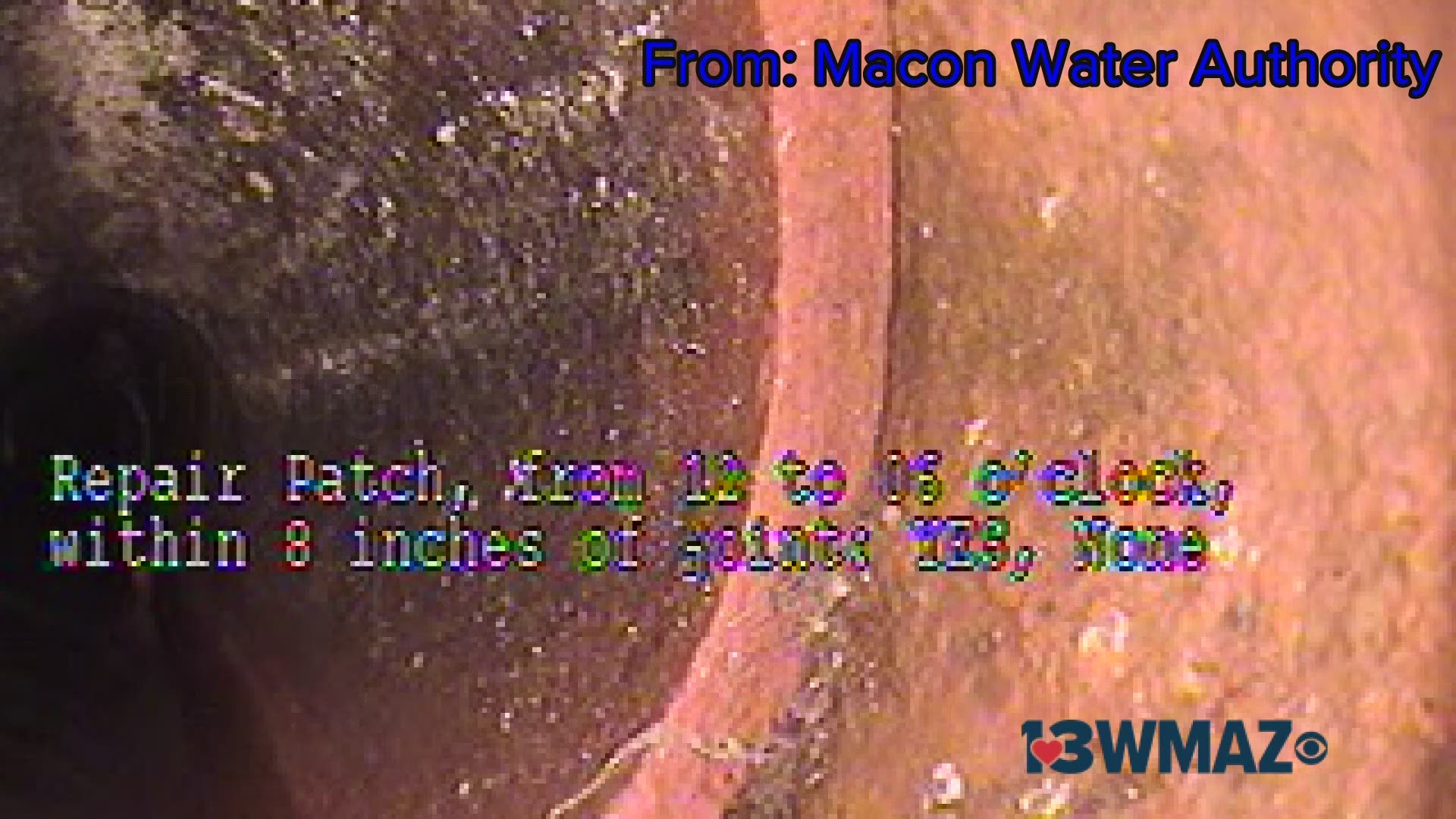Six Olympic-sized pools full of poop may have entered your water--and that's just one spill
We look at what causes spills, where they happened, and where the sewage goes when the line fails.
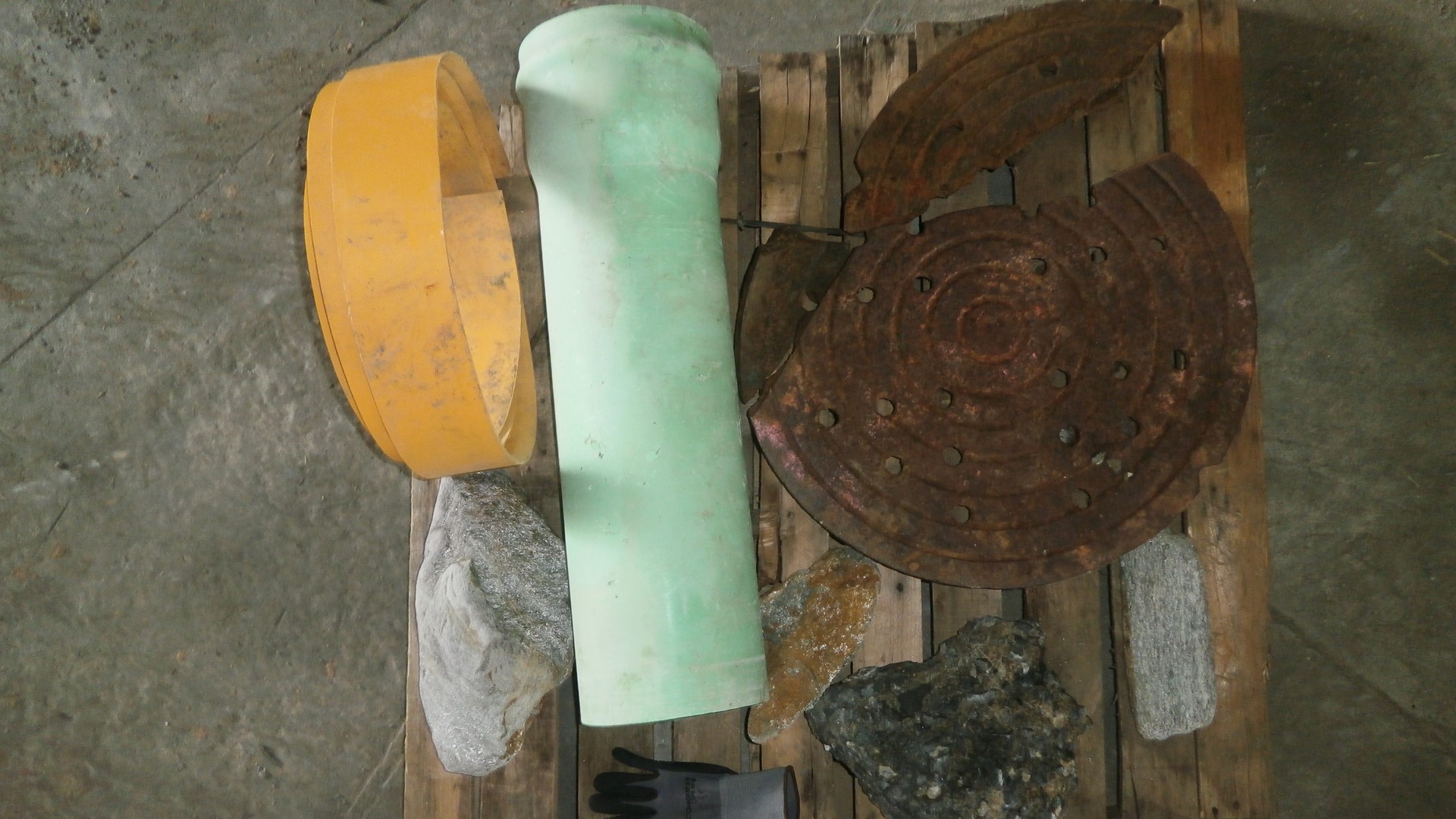
Homeowners caused more than half the spills and overflows in 2018
More than 4 million gallons -- that's how much raw sewage spilled in Macon's largest sewage spill last year.
13 Investigates looked into where that sewage goes, and how something you may do all the time in the kitchen is a big part of the problem.
The Ocmulgee River runs through the heart of Macon from Amerson Park to the Heritage Trail. It draws thousands of people like Jerome Wooten and his son Josiah.
"I like to come out here and look at the water," he says, "and let him play a little bit," he adds pointing to Josiah who adds a cheerful, "Hey!"
Every creek, every stream in the area eventually ends up flowing into the river. It's a route the Water Authority uses to get sewage to treatment centers.
As Mark Wyzalek of the Macon Water Authority puts it, "We follow creeks and streams because we want it to go downhill, and we use gravity to get it to our wastewater treatment plants."
It's Mark's job to make sure the water authority follows environmental rules. That includes testing the water after a spill. That's something that happened 47 times in 2018.
Homeowners actually helped cause more than half the spills and overflows in 2018.
"Grease is actually our number 1 cause of problems. It is not commercial grease, it is residential grease," says Heather Veal of the Macon Water Authority.


It caused 55% of Macon's sewage spills last year. Here's how.
If you pour grease down the drain it hardens and plugs the line. When the sewage can't flow down, it comes bubbling up.
Debris or system failures caused another third of Macon's spills.

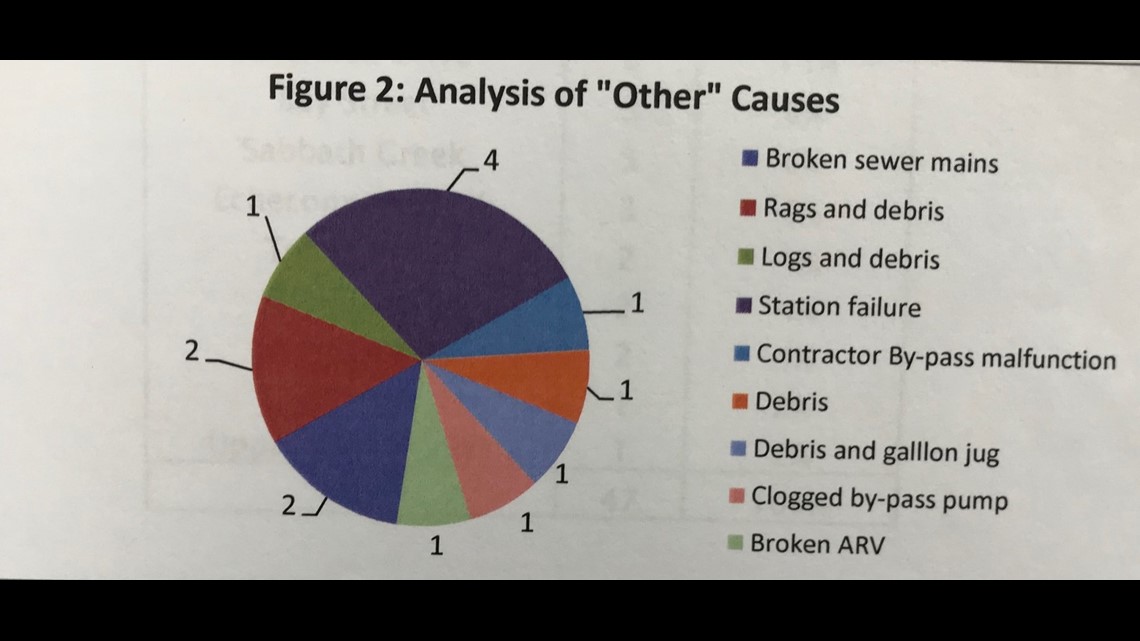
For example, when there's a hill, it's easier to go over it rather than through it.
A pump station makes that happen, but if the power goes out or the pump fails, overflows can happen.
An area off South Pierce saw three spills and overflows last year because of failures at a pump station. It's hoped a new raised manhole and a system of backup generators will keep it from failing again.
The biggest overflow happened near Lynwood Cemetery at Vineville Branch -- ore than 4 million gallons. That's enough to fill 6 Olympic-sized pools full of sewage, and still have some left over. It was 10 times larger than the next largest spill for the year.

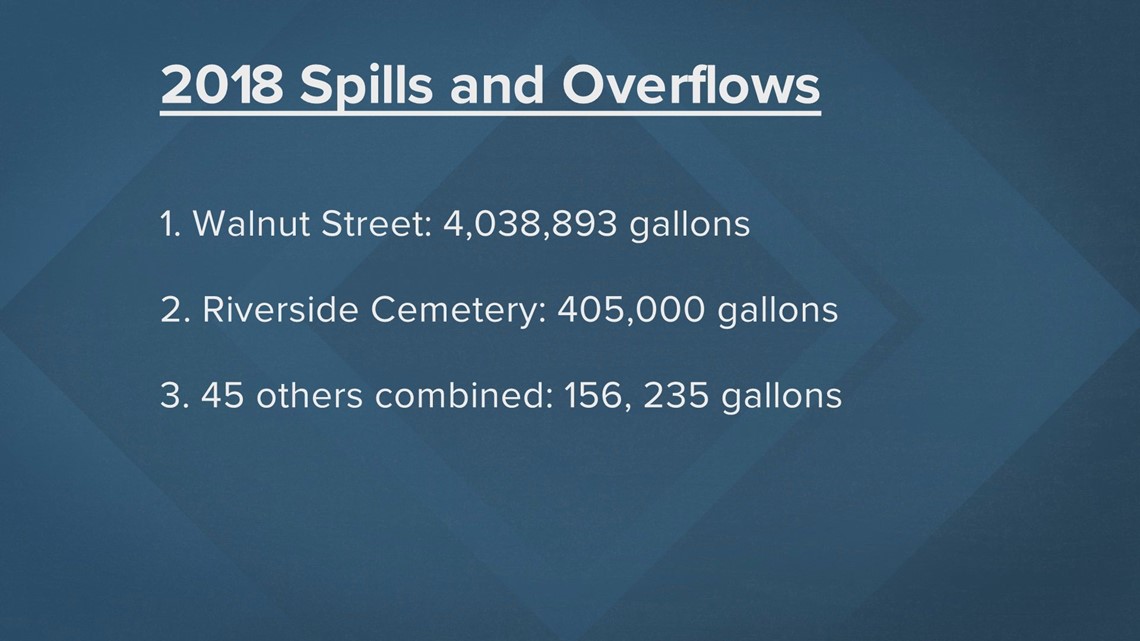
When crews checked the line, they found broken pieces of an entire manhole cover, a chunk of sewage line, a giant plastic cap, rocks, and a glove. They blamed construction debris from contractors working on the interstate project.


Once crews stop the spill, the cleanup begins.
"Any sewage that gets on the ground, they'll spread out lime which raises the pH of the soil, which will kill all of the bugs in the sewage. Then they'll go out and rake up any of the debris," Veal explains.
But once it hits water, there's not much you can do. "You can't put lime in the water because it will raise the pH and kill everything in the water. You just have to wait for rain to come in and wash it down," she adds.
Wyzalek has some good news -- the bacteria doesn't last long in nature. "What happens is when it is in the environment or into the sun, what happens is the bacteria dies off very, very quickly." He calls prevention the best strategy.
Crews actually sent special crews down inside nearly 52 miles of sewer searching for weak spots and blockages.
(To see one of their videos, including root and grease blockages, check out the video below).
"In the old days, they would just sit around and wait for problems to happen, whereas now, we're out actively looking for any issues that are going to arise and trying to prevent them," Veal says.
Here's a look at the areas where the spills happened. Even though the Lower Rocky Creek zone saw the highest number of spills, most of those were smaller. The two largest spills both happened in the Riverside Drive basin, and accounted for about 96% of the volume of sewage spilled that year.


Here is a look at which creeks and streams were impacted by spills:


The two largest spills both happened in Vineville Branch. The July 18, 2018 spill was more than 4 million gallons. It's the one we detail above where they blame construction debris in the line.
The next-largest was one-tenth of that size and around 405,000 gallons. It happened on May 25, 2018 and also went into Vineville Branch.
To give you an idea of how large those two were, the other 45 spills and overflows added up to about 156,000 gallons, or just over 3% of the sewage that spilled or overflowed in 2018.
Once there is a spill in a waterway, Macon Water Authority continues to check bacteria levels for at least one year. They actually go beyond what state law requires.
They also report all spills on their web site and through media notifications, even though they are not required to by law.
To see the 2018 Annual Report where we got some of the charts and data we used, you can find it here.
Between April 1, 2018 and March 31, 2019:
Warner Robins tells us they had 5 spills. See those reports here:
During that same period, Perry reported two spills, both at 1383 Cambridge Drive. The one on January 4, 2019 spilled an estimated 22,740 gallons. A spill at the same location on January 25, 2019 spilled 20,700 gallons. They were caused by heavy rains and ran into Perry Branch. It eventually flows into Big Indian Creek.
Centerville tells us they had no spills during the time we asked about.

